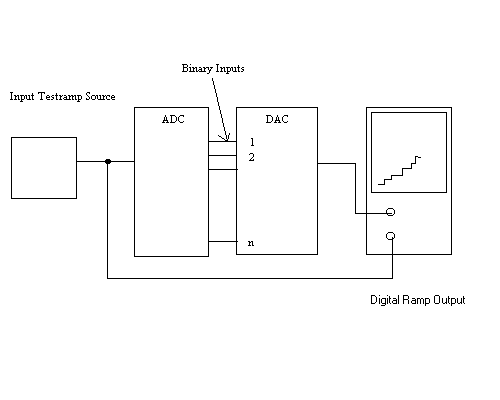Non-monotonicity: The step reversals in Figure A indicate non-monotonic
performance, which is a form of non-linearity. In this particular case, the
error occurs because the 21-bit
in the binary code is interpreted as a constant 0. That is, a short is causing the
bit input line to be stuck LOW.
Differential Non-linearity: Figure B illustrates differential
non-linearity in which the step amplitude is less than it should be for
certain input codes. This particular output could be caused by the 22
bit having an insufficient weight, perhaps because of a faulty input
resistor. We could also see steps with amplitudes greater than normal, if
a particular binary weight were greater than it should be.
Low or High Gain: Output errors caused by low or high gain are illustrated
in Figure C. In the case of low gain, all of the step amplitudes are
less than ideal. In the case of high gain, all of the step amplitudes
are greater than ideal. This situation may be caused by a faulty
feedback resistor in the op-amp circuit.
Offset Error: An offset error is illustrated in Figure D.
Notice that when the binary input is 0000, the output voltage is nonzero and
that this amount of offset is the same for all steps in the
conversion. A faulty op-amp may be the culprit in this situation.


